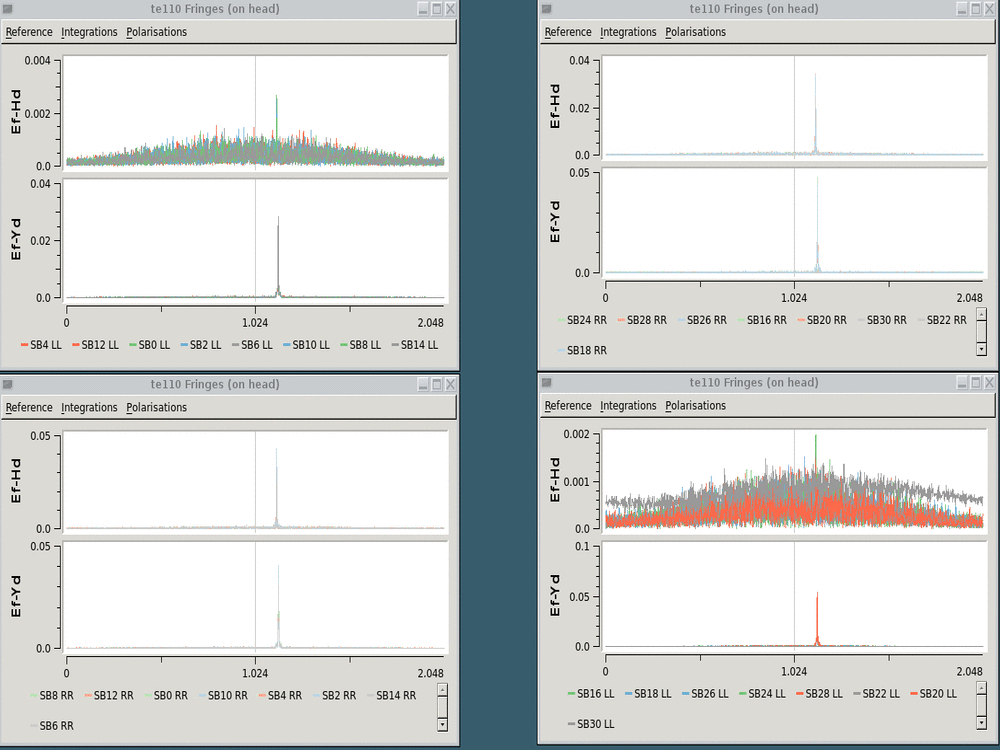Daily Image
19-09-2013First-ever 4Gbps real-time fringes with the EVN
| Submitter: | European VLBI Network |
| Description: | Yesterday, as part of the final review of the EC-sponsored NEXPReS programme, five telescopes of the European VLBI Network, equipped with the next generation of European built VLBI digital receiver system (DBBC), succesfully demonstrated 4 Gigabits per second e-VLBI. This observing mode quadruples the sampled sky bandwidth and with that doubles the sensitivy of the array compared to the current maximum observing data rate of 1Gbps. Radio telescopes located in Metsahovi (Finland), Effelsberg (Germany), Yebes (Spain), Onsala (Sweden) and Hartebeesthoek (South-Africa) observed the source J1800+3848, a distant quasar at z=2, in the X-band experiment TE110. 512MHz of sky bandwidth was observed in both polarizations. After correcting for the clock offsets at the participating stations a strong fringe was observed, as shown in the plots. Using the FiLa10G card, part of the DBBC system, each 4Gbps data stream was duplicated onto its two 10GE ports. One copy of the data was recorded locally. The other copy was split into four 1Gbps streams on-the-fly. Each stream was sent off to one of four SFXC instances (running at JIVE) for immediate correlation, showcasing the possibility of distributed correlation. Due to insufficient network bandwidth (only 20Gbps of incoming bandwidth is available to JIVE), and cluster capacity, only four out of the five stations could be correlated simultaneously. This demonstration could not have been done without the financial support of the EC and a enormous amount of coordinated effort by a lot of individuals at the various institutes across Europe and Africa. Its succes demonstrates the strength of the international collaboration that forms the basis of the EVN. A big thank you goes out to everyone who participated. |
| Copyright: | European VLBI Network |
| Tweet |  |
